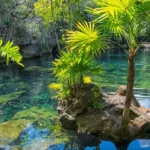Top 50 Must Visit Global Destinations
Embark on a journey through “Top 50 Must Visit Global Destinations: Wonders of the World,” an enticing guide to some of the most breathtaking and culturally rich locations our planet has to offer. This collection is a mosaic of diverse landscapes, ancient monuments, and vibrant cities, each destination holding a unique story and an unforgettable experience. From the serene heights of the Andes to the bustling streets of iconic metropolises, these destinations invite travelers to explore the depths of history, marvel at natural wonders, and immerse in the tapestry of global cultures. Whether it’s standing before the architectural marvels that have stood the test of time, witnessing the majesty of the natural world, or soaking in the lively atmosphere of modern cities, this compilation promises a journey filled with awe, inspiration, and a deeper connection with the world we inhabit. Prepare to be captivated by the beauty, mystery, and the sheer diversity that these top 50 global destinations have in store.
1. Machu Picchu, Peru

Where to Stay in Machu Picchu
Machu Picchu, set high in the Andes Mountains of Peru, is an awe-inspiring testament to the Inca civilization. This UNESCO World Heritage site, often referred to as the “Lost City of the Incas,” was unknown to the outside world until its rediscovery in 1911 by Hiram Bingham. It’s renowned for its sophisticated dry-stone walls that fuse huge blocks without the use of mortar, intriguing buildings that play on astronomical alignments, and panoramic views. The journey to Machu Picchu is itself a significant part of the experience, whether you trek the challenging Inca Trail or take a scenic train ride through the Sacred Valley. This archaeological wonder is not just a relic of the past but a gateway into the Incan culture, offering insights into their advanced understanding of astronomy, agriculture, and engineering.
2. Great Barrier Reef, Australia

The Great Barrier Reef, off the coast of Queensland in northeastern Australia, is the largest living thing on Earth and even visible from outer space. This immense ecosystem comprises thousands of reefs and hundreds of islands made of over 600 types of hard and soft coral. It’s home to countless species of colorful fish, mollusks, starfish, turtles, dolphins, and sharks. Snorkeling and diving in the Great Barrier Reef are world-class, offering an unparalleled opportunity to witness the vibrant marine life and dazzling coral gardens up close. For those who prefer to stay dry, glass-bottom boats and scenic flights provide a spectacular view of the reef. Beyond its sheer natural beauty, the reef offers a critical insight into the health of our planet, especially regarding the impacts of climate change. (Book Your Stay in Greate Barrier Reef Booking.com, Expedia.com, Hotels.com)
3. Venice, Italy

Venice, the capital of northern Italy’s Veneto region, is built on more than 100 small islands in a lagoon in the Adriatic Sea. It has no roads, just canals – including the Grand Canal thoroughfare – lined with Renaissance and Gothic palaces. The central square, Piazza San Marco, contains St. Mark’s Basilica, which is tiled with Byzantine mosaics, and the Campanile bell tower offering views of the city’s red roofs. A city of immense artistic and cultural heritage, Venice is known for its unique architecture and artwork. The experience of a gondola ride along its canals, under its historic bridges, and through its picturesque waterways is a timeless venture. Venice is also renowned for its historic role in trade and commerce, and its evocative atmosphere makes it a staple destination for those seeking romance, history, and art.
4. Grand Canyon, USA

The Grand Canyon, in Arizona, is a natural wonder that needs no introduction. Carved by the Colorado River, the canyon attains a depth of over a mile (1.6 km) and stretches 277 miles (446 km) long. The layers of red rock reveal millions of years of geological history. Grand Canyon National Park is a place of immense vistas, stunning geological formations, and dynamic landscapes. Visitors can experience the canyon through hiking, rafting, and helicopter tours, each offering a unique perspective. The Grand Canyon Skywalk, a glass bridge extending over the canyon, provides a breathtaking view. The area is also significant for Native American history, offering insights into the indigenous cultures that have inhabited the region for thousands of years.
5. Paris, France

Paris, France’s capital, is a major European city and a global center for art, fashion, gastronomy, and culture. Its 19th-century cityscape is crisscrossed by wide boulevards and the River Seine. Beyond such landmarks as the Eiffel Tower and the 12th-century, Gothic Notre-Dame cathedral, the city is known for its cafe culture and designer boutiques along the Rue du Faubourg Saint-Honoré. Paris is also home to the Louvre Museum, housing Leonardo da Vinci’s “Mona Lisa.” The Montmartre district, once the haunt of artists like Picasso and Dali, retains its bohemian charm. Paris is not just about its iconic landmarks; it’s a sensory experience with its quaint bistros, street music, and the pervasive aroma of fresh croissants.
6. Maasai Mara, Kenya

The Maasai Mara National Reserve in Kenya is one of the most famous wildlife conservation areas in the world. Situated in the southwest of Kenya, it is part of the Serengeti Plains and hosts an extraordinary density of animals including the “Big Five” (lions, leopards, elephants, buffalo, and rhinoceros). The reserve is renowned for the Great Wildebeest Migration, an annual event where millions of wildebeests, zebras, and gazelles traverse the landscape in search of fresh grazing. The Maasai Mara is not just about wildlife; it also offers cultural insights into the Maasai people, known for their distinctive customs and dress. A safari in the Maasai Mara is an adventure of a lifetime, providing an unfiltered connection with nature and wildlife.
7. Great Wall of China

The Great Wall of China, a series of fortifications made of stone, brick, tamped earth, wood, and other materials, is one of the most iconic landmarks in the world. It was mainly built as a defense system against invasions from the north and is now a symbol of China’s historical strength and perseverance. Stretching over 13,000 miles, it winds up and down across deserts, grasslands, mountains, and plateaus. The Great Wall offers not just a journey through China’s scenic landscapes but also a walk through history, showcasing various architectural styles and materials from different dynasties. It’s more than just a wall; it’s a testament to human endeavor and a bridge connecting the past and present of Chinese civilization.
8. Taj Mahal, India

The Taj Mahal, located in Agra, India, is a mausoleum built by the Mughal Emperor Shah Jahan in memory of his wife Mumtaz Mahal. This UNESCO World Heritage site is a symbol of love and an architectural marvel of the Mughal era. Made of white marble inlaid with precious stones, the Taj Mahal is renowned for its symmetrical beauty, intricate designs, and serene gardens. It’s not just a monument but an emotional journey into the history of India, reflecting the country’s rich cultural and artistic heritage. The best time to visit is at sunrise or sunset when the marble reflects the nuances of the changing light.
9. Santorini, Greece

Santorini, a volcanic island in the Cyclades group of the Greek islands, is famous for its dramatic views, stunning sunsets, and white-washed houses. Its unique landscapes are the result of a massive volcanic eruption that occurred around 3,600 years ago, shaping the island’s rugged landscapes and cliffs overlooking the Aegean Sea. The towns of Fira and Oia, perched on the cliffs, offer breathtaking views of the blue-domed churches against the backdrop of the sparkling sea. Santorini is also known for its delicious cuisine, fine wines, and romantic atmosphere. It’s an idyllic destination for honeymooners, history enthusiasts, and anyone seeking a picturesque getaway.
10. Serengeti National Park, Tanzania

Serengeti National Park in Tanzania is one of the most famous wildlife sanctuaries in the world, known for its vast savannahs and the annual migration of over two million wildebeest, zebras, and gazelles. This migration is a stunning display of wildlife on the move and is considered one of the most impressive natural events. The park is also home to a large population of lions, leopards, elephants, rhinoceroses, and buffaloes. The Serengeti offers an unparalleled safari experience, allowing visitors to witness the circle of life in its most raw and wild form. The park’s biodiversity and significance in animal migration and conservation make it a must-visit for nature lovers and adventure seekers.
11. Banff National Park, Canada

Banff National Park , located in the heart of the Canadian Rockies, is Canada’s oldest national park and one of the world’s premier destination spots. Known for its stunningly picturesque mountainous terrain, crystal clear lakes, and abundant wildlife, Banff offers a plethora of outdoor activities like hiking, biking, skiing, and hot springs. The park’s crown jewels, Lake Louise and Moraine Lake, are renowned for their vibrant turquoise waters and breathtaking surroundings. The town of Banff, nestled within the park, provides a charming and vibrant base for exploring the natural beauty. The park is not only a haven for nature enthusiasts but also a sanctuary for diverse wildlife species.
12. Iguazu Falls, Argentina/Brazil
Iguazu Falls, located on the border of Argentina and Brazil, is one of the most spectacular waterfall systems in the world. The falls are a series of 275 individual waterfalls and cascades spread in a horseshoe shape over nearly three kilometers. The most famous of these falls is the Devil’s Throat, a U-shaped chasm with 14 falls that drop more than 100 meters. The surrounding subtropical rainforest hosts a variety of wildlife, including several rare and endangered species. The Iguazu Falls offer an awe-inspiring experience, with the thundering sounds of the water and the stunning vistas. Walkways and viewing platforms on both the Brazilian and Argentinian sides provide various perspectives to appreciate the magnificence of these falls.
13. Galápagos Islands, Ecuador

The Galápagos Islands, part of Ecuador, are an archipelago of volcanic islands distributed on either side of the equator in the Pacific Ocean. These islands are famously known for their vast number of endemic species and were studied by Charles Darwin during the voyage of the Beagle, contributing to the inception of Darwin’s theory of evolution by natural selection. The unique wildlife includes giant tortoises, marine iguanas, and various types of finches. The islands offer unparalleled opportunities for wildlife-watching, snorkeling, and diving in an almost untouched environment. The Galápagos are not only a natural wonder but also a living laboratory for scientific research and conservation efforts.
14. Angkor Wat, Cambodia

Angkor Wat in Cambodia is the largest religious monument in the world and a symbol of the country. Originally built as a Hindu temple dedicated to Vishnu for the Khmer Empire, it was gradually transformed into a Buddhist temple towards the end of the 12th century. The temple complex is known for its grand scale, symmetry, and intricate artwork. The walls are adorned with stone carvings and bas-reliefs depicting Hindu mythology and the history of the empire. Exploring Angkor Wat is like walking through the pages of history, with each structure telling a story of religious devotion and artistic mastery. The temple, at sunrise, presents a surreal and majestic experience.
15. Bali, Indonesia

Bali, an Indonesian island known for its forested volcanic mountains, iconic rice paddies, beaches, and coral reefs, is often referred to as paradise on earth. The island is also famous for its yoga and meditation retreats. Balinese culture is a mix of Balinese Hindu-Buddhist religion and Balinese customs. Traditional dance, music, and art are integral to Balinese festivals and ceremonies. Bali’s beach towns like Kuta and Seminyak offer vibrant nightlife, while Ubud is the heart of its cultural and spiritual charm. The island’s diverse landscape, warm hospitality, and unique culture make it a popular destination for travelers from around the world.
16. Yellowstone National Park, USA

Yellowstone National Park, primarily in the U.S. state of Wyoming, is the world’s first national park and famous for its wildlife and its many geothermal features, especially Old Faithful geyser. It’s also home to hundreds of animal species, including bears, wolves, bison, elk, and antelope. The park is a vast wilderness and a wonderland of natural beauty. It features dramatic canyons, alpine rivers, lush forests, hot springs, and gushing geysers. It’s a haven for outdoor enthusiasts and those interested in geology and ecology. Yellowstone provides a unique opportunity to see some of North America’s most iconic wildlife in their natural habitat.
17. Dubai, UAE

Dubai, a city and emirate in the United Arab Emirates, is known for luxury shopping, ultramodern architecture, and a lively nightlife scene. Its most famous landmarks include the Burj Khalifa, an 830m-tall tower, and the Dubai Mall, the largest shopping and entertainment destination in the world. Dubai also has artificial islands like the Palm Jumeirah and the World islands, showcasing human ingenuity in creating luxury living spaces. Beyond its architectural marvels, Dubai offers cultural diversity, luxurious resorts, desert safaris, and an insight into the Middle-Eastern opulence and lifestyle.
18. Rome, Italy

Rome, the capital city of Italy, is a sprawling, cosmopolitan city with nearly 3,000 years of globally influential art, architecture, and culture on display. Ancient ruins such as the Forum and the Colosseum evoke the power of the former Roman Empire. The city hosts the Vatican City, headquarters of the Roman Catholic Church, with St. Peter’s Basilica and the Vatican Museums. Rome is not just about historic sites; it’s a living museum with bustling streets, vibrant piazzas, and a lively culinary scene. It offers a unique blend of historical grandeur and contemporary life.
19. New York City, USA

New York City comprises 5 boroughs sitting where the Hudson River meets the Atlantic Ocean. At its core is Manhattan, a densely populated borough that’s among the world’s major commercial, financial, and cultural centers. Iconic sites include skyscrapers such as the Empire State Building, sprawling Central Park, and the neon-lit Times Square. Known as the “city that never sleeps,” NYC is famous for its diverse culture, arts, and culinary scenes. From Broadway shows and the Metropolitan Museum of Art to diverse neighborhoods like Chinatown and Harlem, it’s a city of endless possibilities.
20. Cape Town, South Africa

Cape Town , a port city on South Africa’s southwest coast, is known for its harbor, natural setting in the Cape Floristic Region, and landmarks such as Table Mountain and Cape Point. The city is renowned for its multiculturalism, with a blend of African, Asian, and European influences. It’s a hub of arts, culture, and history, with Robben Island nearby, where Nelson Mandela was imprisoned. Cape Town’s natural beauty, combined with a vibrant urban life, stunning beaches, and world-class vineyards, make it a unique and diverse destination.
21. Rio de Janeiro, Brazil

Rio de Janeiro is a huge seaside city in Brazil famed for its Copacabana and Ipanema beaches, the 38m Christ the Redeemer statue atop Mount Corcovado, and for Sugarloaf Mountain, a granite peak with cable cars to its summit. The city is also known for its sprawling favelas (shanty towns). Its vibrant Carnaval festival features parade floats, flamboyant costumes, and samba dancers. This city is not just about its iconic landscapes but also about its lively culture, music, and a zest for life.
22. Kyoto, Japan

Kyoto , once the capital of Japan, is a city on the island of Honshu known for its numerous classical Buddhist temples, as well as gardens, imperial palaces, Shinto shrines, and traditional wooden houses. It’s famous for its formal traditions such as kaiseki dining, consisting of multiple courses of precise dishes, and geisha, female entertainers often found in the Gion district. Kyoto’s rich history and preservation of ancient traditions make it a stark contrast to the modernity of cities like Tokyo.
23. Aurora Borealis, Various Locations

The Aurora Borealis, also known as the Northern Lights, is a natural light display predominantly seen in the high-latitude regions (Arctic and Antarctic). Countries like Norway, Iceland, Canada, and Finland offer some of the best views of these lights. The phenomenon is caused by the earth’s magnetic field interacting with charged particles from the sun. The best time to see the Aurora Borealis is during the winter months in locations with clear, dark skies away from city lights. It’s a once-in-a-lifetime experience to witness this magical display of swirling colors in the night sky.
24. Petra, Jordan

Petra, an archaeological site in Jordan’s southwestern desert, dates to around 300 B.C. It was the capital of the Nabatean Kingdom and is accessed via a narrow canyon called Al Siq. It contains tombs and temples carved into pink sandstone cliffs, earning its nickname, the “Rose City.” Perhaps its most famous structure is the 45m-high Al Khazneh, a temple with an ornate, Greek-style facade. Petra is not only a historical treasure but also a testament to human ingenuity and the ability to adapt and thrive in harsh environments.
25. Mount Everest, Nepal/Tibet

Mount Everest is Earth’s highest mountain above sea level, located in the Mahalangur Himal sub-range of the Himalayas. The international border between Nepal and the autonomous region of Tibet runs across its summit point. Its height, as of 2020, is officially 8,848.86 meters (29,031.7 feet). Climbing Everest has been a goal for mountaineers since the 1920s, with the first successful ascent in 1953 by Sir Edmund Hillary and Tenzing Norgay. The mountain, revered by the local population, presents one of the most challenging and extreme adventures in the world, attracting climbers of all levels.
26. Victoria Falls, Zambia/Zimbabwe

Victoria Falls, located on the Zambezi River at the border between Zambia and Zimbabwe, is one of the largest and most famous waterfalls in the world. Known locally as Mosi-oa-Tunya, or “The Smoke That Thunders,” the falls are about twice the height of North America’s Niagara Falls. The surrounding area offers a range of activities from bungee jumping and white-water rafting to serene sunset cruises. The Victoria Falls National Park in Zimbabwe and the Mosi-oa-Tunya National Park in Zambia provide a rich wildlife experience, with the chance to see elephants, giraffes, buffaloes, and other animals.
27. Bora Bora, French Polynesia

Bora Bora is a small South Pacific island northwest of Tahiti in French Polynesia. Surrounded by sand-fringed islets and a turquoise lagoon protected by a coral reef, it’s known for its scuba diving. At the island’s center rises Mount Otemanu, a dormant volcano. The island is renowned for its luxury resorts, overwater bungalows, and beautiful blue waters. Bora Bora is the epitome of a tropical paradise and is often a top choice for honeymooners and those seeking a luxurious, secluded getaway.
28. Barcelona, Spain

Barcelona, the cosmopolitan capital of Spain’s Catalonia region, is known for its art and architecture. The fantastical Sagrada Família church and other modernist landmarks designed by Antoni Gaudí dot the city. Barcelona’s architectural uniqueness is most vividly displayed in Gaudí’s works, including Park Güell and Casa Batlló. The city’s art scene is equally rich, with the Picasso Museum and Joan Miró Foundation showcasing modern masterpieces. Barcelona’s historic Gothic Quarter, with its winding pathways and medieval buildings, contrasts with the trendy, bustling La Rambla and beachside bars. The city is also famous for its culinary scene, ranging from tapas bars to high-end dining, and the vibrant nightlife. Barcelona’s rich cultural heritage, combined with its Mediterranean climate and beachfront location, makes it a multifaceted destination appealing to a broad spectrum of travelers.
29. Antarctica

Antarctica, the Earth’s southernmost continent, is a land of extremes. It’s the coldest, driest, and windiest continent, covered almost entirely by ice. Visiting Antarctica offers a unique and unforgettable experience – it’s one of the few places on Earth that remains largely untouched by humans. The journey typically involves crossing the Drake Passage, known for its rough seas. Visitors are rewarded with spectacular sights: towering icebergs, incredible glaciers, and an abundance of wildlife including penguins, seals, and whales. Expeditions often include zodiac boat trips, kayaking, and wildlife watching. Antarctica’s pristine environment and its significance in climate research make it a fascinating destination for adventure travelers and nature enthusiasts.
30. Amalfi Coast, Italy

The Amalfi Coast, located in Italy’s southwestern region of Campania, is known for its extraordinary beauty and iconic coastal landscape. The coastline stretches about 50 kilometers along the southern edge of Italy’s Sorrentine Peninsula and is famed for its picturesque towns like Amalfi, Positano, and Ravello. These towns are perched precariously along steep cliffs, offering stunning views of the azure Mediterranean Sea. The region is also known for its colorful terraced gardens, expansive lemon groves, and vibrant blue waters. The Amalfi Coast is not just about its scenic beauty; it’s also rich in history and culture, with ancient churches, grand villas, and artisanal shops. The area’s culinary delights, particularly its seafood and lemon-infused dishes, add another layer to its allure.
31. Prague, Czech Republic

Prague, the capital city of the Czech Republic, is known for its well-preserved medieval architecture and its historical center, which is a UNESCO World Heritage site. The city’s Gothic and Baroque buildings, including the Prague Castle, Charles Bridge, and the Astronomical Clock, create a magical and almost fairytale-like atmosphere. The Vltava River meanders through the city, with boat cruises offering picturesque views of the cityscape. Prague’s rich history is matched by its vibrant cultural life, with numerous theaters, galleries, and clubs. The city’s beer culture is renowned, boasting some of the best beers in the world. Prague offers a unique blend of history, culture, and modern urban life, making it a compelling destination for travelers.
32. Istanbul, Turkey

Istanbul, straddling Europe and Asia across the Bosphorus Strait, is a city with a rich tapestry of history and culture. It’s known for its historic sites, including the Hagia Sophia, with its soaring dome and Christian mosaics, the majestic Blue Mosque, and the sprawling Topkapi Palace. The city’s Grand Bazaar and Spice Market are bustling hubs of commerce and culture, offering a sensory feast of colors, smells, and sounds. Istanbul’s unique position as a bridge between two continents has given it a diverse cultural heritage, evident in its food, music, and architecture. This city not only connects continents but also times, merging the ancient with the modern in a vibrant urban tapestry.
33. Havana, Cuba

Havana, the capital of Cuba, is known for its well-preserved Spanish colonial architecture and its pivotal role in the 20th-century history. The city’s colorful vintage cars, pastel houses, and salsa music offer a trip back in time. Old Havana, with its narrow streets and historic buildings, reflects the city’s vibrant cultural history and architectural heritage. Havana is not just about its picturesque streets; it’s also a hub of Cuban culture, art, and music. The city’s dynamic arts scene is evident in its street art, music venues, and the annual Havana Biennial art exhibition. Havana is a city where history, culture, and the rhythm of life merge into a unique experience.
34. Jaipur, India

Jaipur, the capital of India’s Rajasthan state, is known as the “Pink City” for its trademark building color. It’s part of the famous Golden Triangle tourist circuit, along with Delhi and Agra. The city’s landmarks include the Hawa Mahal, a honeycomb-like palace, the Jantar Mantar observatory, and the opulent City Palace. Jaipur is also a gateway to Rajasthan’s desert landscapes, forts, and palaces. The city is a major hub for arts and crafts, including jewelry, textiles, and pottery. The vibrant markets, cultural festivals, and local cuisine add to its charm. Jaipur’s blend of royal history, architectural marvels, and colorful culture makes it a fascinating destination for travelers.
35. Fiordland National Park, New Zealand

Fiordland National Park, located in the southwest of New Zealand’s South Island, is known for its fjords, tall mountains, and dense rainforests. It’s part of the Te Wahipounamu World Heritage site. The park’s most famous fjords, Milford Sound and Doubtful Sound, offer stunning natural scenery with towering cliffs and cascading waterfalls. Milford Sound, described by Rudyard Kipling as the “eighth wonder of the world,” is particularly renowned for its majestic beauty. The park offers opportunities for hiking, kayaking, and cruising, allowing visitors to immerse themselves in its natural splendor. Fiordland’s untouched landscapes and diverse wildlife, including dolphins, seals, and penguins, make it a haven for nature lovers.
36. Marrakech, Morocco

Marrakech, a former imperial city in western Morocco, is a major economic center and home to mosques, palaces, and gardens. The medina is a densely packed, walled medieval city dating to the Berber Empire, with maze-like alleys where thriving souks (marketplaces) sell traditional textiles, pottery, and jewelry. The city’s focal point is the bustling Djemaa el-Fna, a square and marketplace, bustling with storytellers, musicians, and performers. Marrakech is also known for its luxurious riads, traditional Moroccan houses with interior gardens or courtyards. The city offers a sensory journey through its aromatic food, colorful textiles, and vibrant cultural scene, making it a captivating destination for travelers.
37. Uluru, Australia

Uluru, also known as Ayers Rock, is a massive sandstone monolith in the heart of the Northern Territory’s arid “Red Centre” in Australia. It’s sacred to indigenous Australians and is thought to have started forming around 550 million years ago. The rock is notable for appearing to change color at different times of the day and year, most notably glowing red at dawn and sunset. Uluru is surrounded by red sand, springs, waterholes, rock caves, and ancient paintings. It’s not just a natural wonder but also a cultural landmark, deeply entwined with Aboriginal mythology and spirituality. The Uluru-Kata Tjuta National Park is a UNESCO World Heritage site and offers a unique insight into the area’s natural and cultural history.
38. Yellowknife, Canada

Yellowknife, the capital of Canada’s Northwest Territories, is a remote city known as one of the best places in the world to view the Northern Lights (Aurora Borealis). Located on the shores of Great Slave Lake, it offers a mix of wilderness adventures and indigenous culture. In winter, the city becomes a hub for viewing the spectacular light show in the sky, best seen between mid-November and early April. Yellowknife also offers other winter activities like dog sledding, ice fishing, and snowmobiling. The city’s small-town charm, combined with its unique geographical location, makes it a unique destination for those seeking adventure and natural beauty.
39. Halong Bay, Vietnam

Halong Bay, located in northeastern Vietnam, is known for its emerald waters and thousands of towering limestone islands topped with rainforests. Junk boat tours and sea kayak expeditions take visitors to explore the islands, many of which feature caves and lakes. Notable islands include Cat Ba, home to the endangered Cat Ba langur, and Tuan Chau, known for its beaches and resorts. The area is culturally significant with several ancient sites. Halong Bay’s stunning scenery, often shrouded in mist, creates an ethereal and almost mystical atmosphere, making it a captivating destination for travelers.
40. Kruger National Park, South Africa

Kruger National Park, one of Africa’s largest game reserves, is located in northeastern South Africa and spans across Limpopo and Mpumalanga provinces. It’s home to a high density of wild animals, including the Big 5: lions, leopards, rhinos, elephants, and buffalos. Hundreds of other mammals make their home here, as do diverse bird species such as vultures, eagles, and storks. The park’s vast landscapes range from dense forests to open savannahs, offering diverse habitats for wildlife. Visitors can experience safari drives, guided walks, and wilderness trails. Kruger National Park is not just a wildlife haven; it’s a vital part of South Africa’s eco-tourism and conservation efforts, providing a unique opportunity to experience wildlife in its natural environment.
41. Oia, Greece

Oia, a coastal town on the northwestern tip of Santorini, a Greek island in the Aegean Sea, is famous for its breathtaking sunsets, charming houses carved into the cliffs, and stunning views of the turquoise sea. The town’s whitewashed buildings with blue domes, narrow streets, and sunbathed terraces create a postcard-perfect scene. Oia is also known for its bustling marketplace, filled with quaint shops selling local crafts, jewelry, and fine art. The town’s relaxed atmosphere, combined with its unique architecture and stunning natural beauty, makes Oia a dream destination for photographers, romantics, and travelers seeking tranquility and inspiration.
42. Los Glaciares National Park, Argentina

Los Glaciares National Park, located in the Austral Andes of Argentina, is home to some of the most spectacular landscapes in the world. The park gets its name from the numerous glaciers found here, including the famous Perito Moreno Glacier. This massive glacier is unique for its continuous advance, which leads to spectacular ice calving from its front wall. The park’s rugged terrain, massive ice fields, and turquoise lakes offer stunning scenery and are a haven for hikers and climbers. The park is also rich in flora and fauna, including Andean condors and guanacos. Los Glaciares National Park is a UNESCO World Heritage Site, celebrated for its natural beauty and its importance in studying glaciology and climate change.
43. Cinque Terre, Italy

Cinque Terre, located on the Italian Riviera, comprises five picturesque villages: Monterosso, Vernazza, Corniglia, Manarola, and Riomaggiore. These villages are known for their colorful houses, vineyards, steep terraces, and stunning views of the Mediterranean Sea. The Cinque Terre region is a UNESCO World Heritage Site, recognized for its breathtaking landscape and the harmonious interaction between people and their natural environment over centuries. The area is popular for hiking, with trails connecting the villages, offering scenic views along the coast. The region’s cuisine, characterized by fresh seafood, pesto, and local wines, adds to the charm of this unique destination.
44. Lake Bled, Slovenia

Lake Bled , located in Slovenia’s Julian Alps, is known for its iconic church on an island in the middle of the lake, the medieval Bled Castle perched on a cliff above, and the surrounding mountains. The lake’s emerald-green waters and picturesque setting make it a popular tourist destination. Visitors can take a traditional pletna boat to the island, hike around the lake for panoramic views, or visit the castle to learn about the area’s history. The lake is also known for its healing climate and thermal springs. The town of Bled offers a charming atmosphere with its alpine architecture, making it a perfect retreat for nature lovers, photographers, and those seeking relaxation.
45. Cappadocia, Turkey

Cappadocia, located in central Turkey, is known for its unique rock formations, cave hotels, and hot air balloon rides. The region’s landscape is sculpted from volcanic tuff and is characterized by fairy chimneys, ancient underground cities, and cave churches with frescoes. A hot air balloon ride at sunrise offers a spectacular view of the otherworldly landscape. Cappadocia’s rich history is evident in the Göreme Open-Air Museum, a complex of medieval painted cave churches carved out by Orthodox monks. The region’s unique geological and cultural heritage, combined with its distinctive lunar landscapes, makes Cappadocia a fascinating destination for adventurers and history enthusiasts.
46. Niagara Falls, USA/Canada

Niagara Falls, located on the border between the United States and Canada, is one of the most famous waterfalls in the world. Comprising three waterfalls – the American Falls, the Bridal Veil Falls, and the Horseshoe Falls – Niagara Falls is renowned for its immense beauty and hydroelectric power. The falls can be experienced from various vantage points, including observation towers, walking trails, and boat tours like the Maid of the Mist. The surrounding area offers attractions such as parks, casinos, and museums. Niagara Falls is more than just a natural wonder; it’s a symbol of natural power and beauty and a significant source of hydroelectric power.
47. Zanzibar, Tanzania

Zanzibar, an archipelago off the coast of East Africa, is known for its stunning beaches, clear blue waters, and the historic Stone Town, a World Heritage Site. Zanzibar’s history as a trading center is reflected in its unique blend of Arab, African, Indian, and European influences. Stone Town is famous for its ancient doors, narrow alleyways, and bustling bazaars. The islands are also known for their spice plantations, offering a sensory experience of exotic spices. The surrounding coral reefs provide excellent opportunities for snorkeling and diving, making Zanzibar a perfect destination for beach lovers, history enthusiasts, and spice aficionados.
48. Dead Sea, Jordan/Israel

The Dead Sea, located between Jordan and Israel, is the lowest point on Earth’s surface and a natural wonder. Known for its extremely high salt content, which allows people to float effortlessly, the Dead Sea is surrounded by stunning landscapes of mountains and desert. The mineral-rich mud of the Dead Sea is renowned for its therapeutic properties, attracting visitors seeking natural skin treatments. The Dead Sea area also has historical significance, with nearby attractions such as the ancient fortress of Masada and the Qumran Caves, where the Dead Sea Scrolls were discovered. The Dead Sea offers a unique combination of natural beauty, health benefits, and historical significance.
49. Bagan, Myanmar

Bagan, located in the Mandalay Region of Myanmar, is an ancient city famous for its thousands of Buddhist temples, pagodas, and monasteries. At its height between the 11th and 13th centuries, Bagan was the capital of the Pagan Kingdom and played a crucial role in the spread of Buddhism in Myanmar. The temples, with their intricate brickwork and spiritual significance, are a testament to the architectural skill and religious devotion of the ancient Burmese. Visitors can explore the temples by bicycle, horse-cart, or hot air balloon, offering different perspectives of this archaeological wonder. Bagan is not just a collection of ancient structures; it’s a sacred landscape that offers a glimpse into Myanmar’s rich cultural heritage.
50. Easter Island, Chile

Easter Island, a remote volcanic island in Polynesia, is a territory of Chile. It’s most famous for its nearly 1,000 monumental statues called moai, created by the early Rapa Nui people. The moai are enormous, carved stone figures scattered around the island, most notably at Rano Raraku and Ahu Tongariki. The island also offers pristine beaches, volcanic craters, and archaeological sites. Easter Island is not just a destination for its mysterious statues; it’s a place of unique cultural interest, offering insights into how a remote Pacific community lived, thrived, and eventually declined. The island’s isolation adds to its mystique, making it a bucket-list destination for those fascinated by history and anthropology.




















































































































































































































